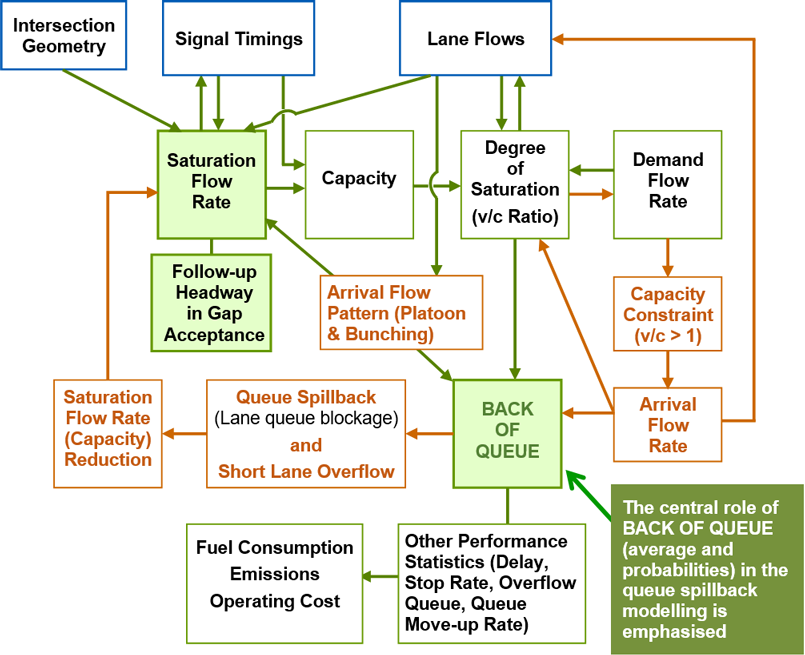A critical review of Austroads Report AP-R621-20
Revised version published as Austroads Report AP-R647-21 “Management of Traffic Modelling Processes and Applications”
Where is capacity in simulation?
The Austroads report gives a lot of emphasis on demand modelling but not enough on capacity modelling, and it ignores important calibration issues that need to be discussed in relation to microsimulation models. In relation to model calibration, the question "Where is capacity in simulation?" should be asked to establish the difference between analytical and simulation models.
Capacity in analytical models
In analytical intersection and network traffic models, capacity is the key parameter used in estimating degree of saturation (v/c ratio), delay, queue length, stop rate, and so on. The methods used to estimate the key parameters of capacity as a function of road geometry, traffic flows (demand) as well as signal timings (cycle time, green time) for signalised intersections, are based on well-established traffic theory and empirical methods.
In analytical models, these key parameters for capacity estimation are saturation flows for signalised intersections and follow-up headway and critical gap (gap acceptance) parameters for roundabouts and stop / give-way sign-controlled (priority) intersections. These parameters can be observed and used in calibrating analytical models.
Capacity in microsimulation and mesosimulation models
In microsimulation models of intersections and networks, capacity is not used generally, and the saturation flow parameter is not used for signals. Saturation flows are directly related to three fundamental parameters, namely driver reaction time (queue discharge response time), queue space (jam density) and saturation (queue discharge) speed.
In calibrating a microsimulation model to achieve observed saturation flow or follow-up headway values, the parameters of the particular microsimulation model corresponding to the driver reaction, queue space and saturation speed parameters could be used. This may be difficult task but it is theoretically possible.
It is recommended that the Austroads report should discuss this subject in explaining the calibration of analytical and simulation models.
SIDRA capacity and performance estimation model
In traffic modelling using simulation or analytical models in general, the use of constant capacity, saturation flow and gap acceptance parameters is not recommended. Unless good estimation and calibration methods are used in an analytical or simulation model to estimate or imply realistic capacity values, the estimates of delay, queue length, stop rate would not be reliable.
The iterative capacity and performance estimation model for intersections and networks used in SIDRA INTERSECTION is shown in the flow chart given here.

